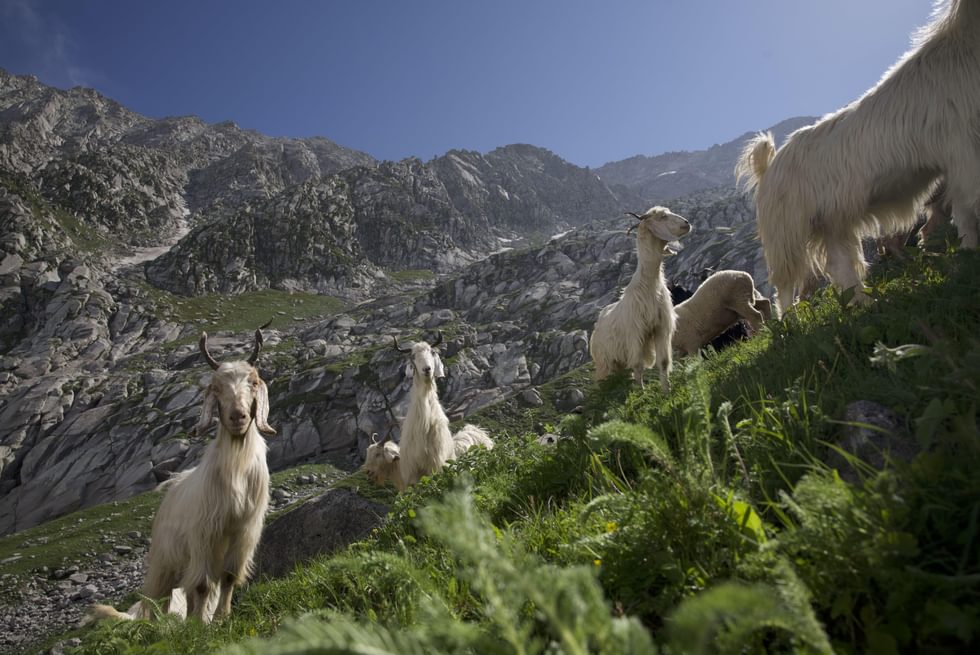
This collection is compiled by the Ecological Distress Collective, hosted at SOAS Anthropology.
Introduction
In recent years, the medical and psychological sciences have begun to conceptualize ecological distress using biomedical illness categories, coining terms such as ‘eco-anxiety’, ‘ecological grief,’ and ‘climate trauma’ (see Wardell 2020). To some extent, these terms help us to understand the ways in which environmental change generates new stressors. However, they are limited in that the appropriation of medical categories reproduces a modernist approach that locates health in the hands of a medical institution and illness within the body of individuals (Rhodes and Dunk 2023). Furthermore, the universalizing tendencies of biomedical sciences—the will to see the same illness affecting everyone, everywhere in similar ways—obscures the unequal effects of environmental damage and pollution. We may therefore miss the histories and politics that have led to these inequalities (Chance 2022).
In our classrooms we are increasingly encountering ecological distress, and many of our students seek anthropological thinking as a way of making sense of the everyday challenges of climate change and ecological destruction. As a collective, we see it as our responsibility to encourage critical inquiry about the ways in which ecological distress is a shared planetary problem, and the ways in which it is unevenly distributed, or incommensurable, across bodies, minds, landscapes, and within and between pedagogical spaces. How might old and new anthropological insights shape how we respond to and understand—even help to repair—ecological distress?
The entries within this collection aim to encourage students—in and outside the university—to think through these kinds of questions. Our diverse collective of scholars and practitioners are based across the United Kingdom, the United States, Malaysia, India, Australia, Germany, and New Zealand, where the contours of ecological distress take distinct forms. We have each designed diverse experimental engagements that either take the form of guided readings suggested for classroom use, or activist and practical pedagogical tools for generating knowledge, awareness, and understanding of ecological distress across these contexts. By bringing together these contributions, we hope to build links between the conceptual, the practical, the pedagogical and the political, facilitating anthropologically-grounded spaces for solidarity and imagination.
Every situation of ecological distress is unique, and so we encourage you to take your own journey through these materials, choosing those that are useful for your learning environment.
Our toolkit as a whole encourages reflection on ecological distress’s pasts, presents, and futures. Some aim to teach reflection on processes of change, loss, and the destruction of memory: Chao’s reading of Ogden invites reflection on loss and wonder as ways of challenging power and privilege. Chance’s tool uses her work on eco-anxiety governance as a springboard to encourage reflection on the differential impacts of narratives around eco-anxiety and climate change. Other contributions focus on grappling with the prescient challenges of the present: Wardell’s teaching tool enables a ‘tuning into’ climate emotions, and Schnegg encourages attention to ‘atmospheres.’ Bradley’s tool encourages mindfulness in the classroom, while Shyam Lal, Soujanyaa Boruah, and Sartaj Ghuman offer tools for interrogating the emotional toll of ecological stress, and Gerimis Art Project offer a toolkit for witnessing ecological distress as a balm for the loss of a sense of self produced by environmental destruction. Thinking towards a more hopeful future: Quasem encourages us to think with parables to encourage hope in uncertain times, and Bala fosters the space for awareness of different kinds of knowledge production around the nature of climate change.
Discussions of ecological distress can themselves be distressing for students and communities. We encourage sensitivity and care in deploying these tools.
References
Chance, Kerry Ryan. 2022. “Eco-Anxiety and Climate Urgency in the Mother City.” Transition 133, no. 1: 179–201.
Rhodes, Paul, and James Dunk. 2023. “Eco-Psychology: A Critical Paradigm in the Climate Emergency.” Australian Psychologist 58, no. 3: 154–60.
Wardell, Susan. 2020. “Naming and Framing Ecological Distress.” Medicine Anthropology Theory 7, no. 2: 187–201.
Posts in This Series

Section One: Reflecting on Distress
Guided Reading by Sophie Chao Ogden, Laura A. 2021. Loss and Wonder at the World’s End. Durham, N.C.: Duke University Press. Students in a course on “The Anthr... More

Section Two: Grappling with Distress
Guided Reading by Michael Schnegg Aijazi, Omer. 2024. Atmospheric Violence: Disaster and Repair in Kashmir. Philadelphia: University of Pennsylvania Press. Omer... More

Section Three: Theorizing Distress Otherwise
Guided Reading by Saad Quasem Ghosh, Amitav. 2021. The Nutmeg’s Curse: Parables for a Planet in Crisis. Chicago: University of Chicago Press. My ethnography tak... More